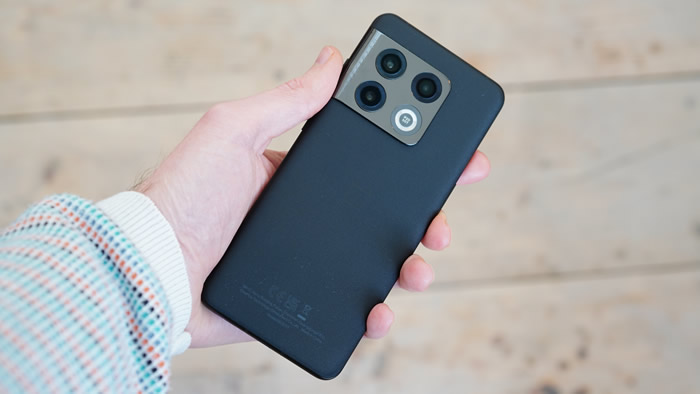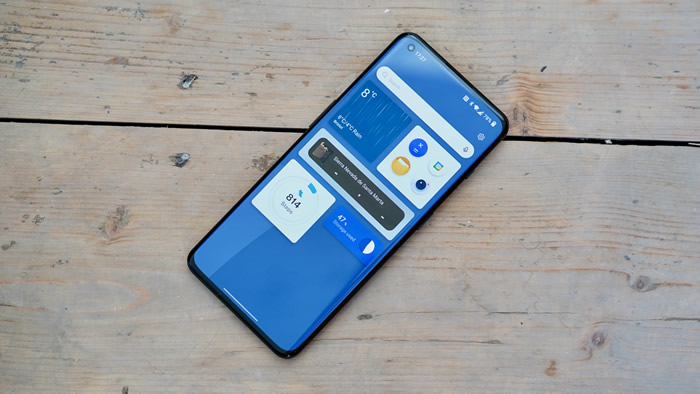
After being assimilated by Oppo last year, there were fears that the upstart OnePlus brand had betrayed its own ‘Never Settle’ mantra. But while the OnePlus 10 Pro is certainly a little safe, it still stands as one of the most pleasant-to-use flagship phones of 2022.
What’s more, OnePlus has actually made its latest flagship phone a little more accessible than last year’s OnePlus 9 Pro. Prices start from £799 for 8GB of RAM and 128GB of storage, moving up to £899 for 12GB and 256GB.
With strong competition from Samsung and Xiaomi in 2022, however, OnePlus can’t afford to rest on its laurels.
Screen
Recent OnePlus Pro phones have packed displays that can mix it with the very best on the market, and the OnePlus 10 Pro is no different.
It’s a very similar 6.7-inch AMOLED display to last year’s model, with the same maximum QHD+ resolution and 120Hz refresh rate. With LTPO technology, it can scale right down to 1Hz when the scenario calls for it, thus saving valuable battery life.
The picture it outputs is sharp, bright (up to 1,300 nits), and colour accurate. OnePlus claims to have calibrated the colours at low and moderate brightness settings, which is going above and beyond the call of duty.
You’ll have to be content with curved display edges, as before, but we didn’t experience any of the annoying false palm inputs that we did with the Xiaomi 12 Pro.
Design

OnePlus has switched up its design for the OnePlus 10 Pro after a slightly drab OnePlus 9 Pro. It’s a lot more handsome in the flesh than it is in static images.
Part of that is down to a new frosted glass finish to the back, which up close almost resembles the textured privacy glass you see in certain bathroom windows, albeit with an underlying black or green shade. It’s perfectly silky smooth to the touch, though, and the contrast is pleasing.
Also new is the OnePlus 10 Pro’s shiny metal camera module, which joins up with the aluminium frame on one side. Stretching across much of the width of the phone, it’s far more in-your-face than previous OnePlus models.
The proportions are very similar to the OnePlus 9 Pro, with an almost identical 8.7mm thickness and a slightly heavier weight of 201g. IP68 certification ensures that it’s similarly water and dust-resistant, too.
Power
By fitting its phone with a Snapdragon 8 Gen 1 chip, OnePlus has successfully kept up with the flagship arms race. The OnePlus 10 Pro is just as powerful as the likes of the Xiaomi 12 Pro and the Oppo Find X5 Pro.
It doesn’t represent a huge improvement over the OnePlus 9 Pro and its Snapdragon 888, especially when it comes to raw processing power. But the GPU has received a bump, so games like Genshin Impact should run even smoother on high settings.
Backed by 8 or 12GB of speedy LPDDR5 RAM, depending on the model, the OnePlus 10 Pro is more than up to the usual flagship tasks like multitasking, photo and video editing, and high-end 3D gaming.
OnePlus has also equipped the phone with a 5-layer 3D Passive Cooling System, which is the brand’s biggest and most advanced yet. It serves to keeps things cool when that processor us under heavy load.
We didn’t experience any performance or overheating issues during our time with the phone. It’s as fast and fluid as you’d hope.
Camera
OnePlus made great strides with its camera offering with the OnePlus 8 Pro and OnePlus 9 Pro, but it appears to have stalled somewhat with the OnePlus 10 Pro.
It’s still capable of taking vibrant, sharp shots across its triple-camera set-up. But the hardware is relatively unchanged from the OnePlus 9 Pro before it, offering a broadly similar experience while rivals like Samsung, Apple and Xiaomi have improved.
You get the same 48MP Sony IMX 789 wide image sensor and the same competent 8MP 3.3x telephoto as before. There is a new 50MP ultra-wide onboard, however, which gains a new 150-degree fish-eye option alongside the regular 110-degree snaps. There’s no monochrome camera this time, but that’s no great loss.
Swedish camera specialist Hasselblad is back for a second year of colour tuning, but the results are a little on the overblown side. Blue skies look a little too blue, reds pop way too much, and overexposure can creep in. Many will prefer the stylised look of these shots, and they’re great for sharing on your favourite social network, but they’re not what you’d call natural.

Shots taken with that new ultra-wide camera are a little paler than with the other sensors, but they’re suitably sharp. We could happily leave that new 150-degree ultra-ultra-wide option, though.

We were disappointed with the quality of the 10 Pro’s night shots. It felt like we needed to take multiple shots to capture one that was suitably sharp. Hopefully a few firmware updates will address this.

Selfies from the sharp 32MP front camera are of a decent quality, if a little lacking and overexposed compared to something like the iPhone 13 Pro.
The 10 Pro also gains the ability to shoot 10-bit photos using the HEIF format, which means way more colour gradations than normal. However, they won’t output on all displays.
Hasselblad has also brought individual photographer ‘master styles’ to bear, and a new RAW+ mode that combines high-detail RAW files with automated image processing.
Features
OnePlus phones always have a couple of stand-out features that mark them out from the rest. One of those is a physical alert slider on the edge of the phone.
With this switch you can flit between loud, silent, and vibrate modes in an instant. It’s perfect for those occasions (cinema visits, intimate dinners etc.) where you want to quickly and discretely hush your little distraction machine up.
Software is another area where OnePlus stands out, and we’re especially relieved to see its custom OxygenOS UI return for another year. The initial intention was to switch to Oppo’s ColorOS interface, but fan backlash thankfully put paid to that idea.
The underpinnings of OxygenOS 12 are still from Oppo, but you get OnePlus’s stylish fonts and no-nonsense approach to bloatware layered on top. It’s just a cleaner and more pleasant to use UI than so many rival efforts.
There’s one notable exception to this in the new Shelf function. Drag down from the top right of the screen and you’ll gain access to some widgets and a search field. It feels half-baked and clunkily implemented, and we were glad of the option to turn it off.

Battery life, memory and connectivity
Perhaps the biggest hardware improvement with the OnePlus 10 Pro is its battery. The capacity has been upped to 5000mAh, and the results are a flagship phone with decent stamina.
We were able to get through a long 17-hour day with a little over 4 hours of screen on time, and we were still left with around 55% power left. Admittedly, we weren’t in a 5G area for much of that time, but the spare capacity suggests to us that it would get through a full day in more demanding network environments.
OnePlus has upped its charging provision to suit, packaging in an 80W brick. This ensures that charging is as quick as the OnePlus 9 Pro with its smaller 4500mAh battery.
In 30 minutes of charging, we recorded the OnePlus 10 Pro going from absolute zero to 87%.
Verdict
The OnePlus 10 Pro represents consolidation over innovation for the brand. It’s a handsome, easy-to-use flagship phone with plenty of power on tap and decent stamina.
Despite a few missteps, we still favour OnePlus’s software approach over most others. All this and the price has actually come down a little, which is almost unheard of these days.
That said, we would have liked to have seen a little more advancement from last year’s OnePlus 9 Pro, especially when it comes to the camera system, which has fallen a little behind its rivals on the development curve.
It’s still a great pick for the money, but the competition is only getting stiffer.











